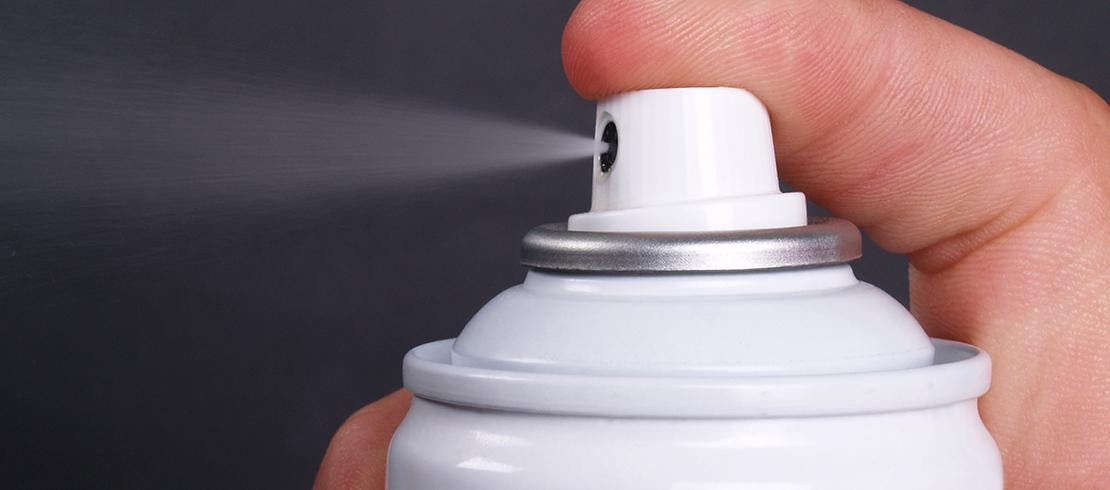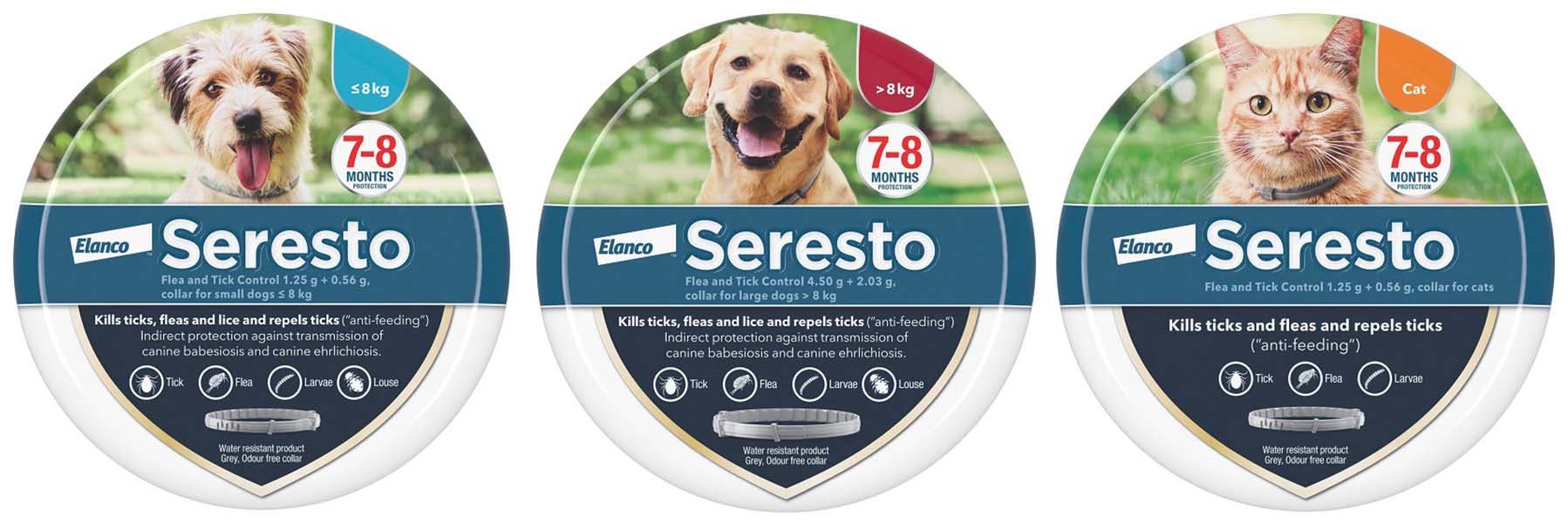Contrary to popular pet owner belief, fleas aren’t seasonal – actually, they’re a year-round risk. Treating your dog or cat for fleas should be a regular entry on the kitchen calendar. A common question vets get asked is ‘how often should I flea my dog?’ – this very much depends on the product you choose to use.
There are all sorts of flea treatments out there, so it can be hard to know which is most suitable for your perfect pooch. Flea collars, spot-ons, sprays or tablets? They all work differently and for varying periods.
How frequently you apply effective flea treatment will depend on the product you choose to use. Here’s a handy overview to help you easily pick the most convenient flea treatment for you and your dog’s lifestyle.
Flea sprays
Flea sprays can be used directly on your dog but only if they’re designed for animals. Never use a household flea spray on your pet. Pet flea sprays can kill fleas, but may need to be re-applied from as often as every few days, up to every few weeks.

Flea tablets
Flea tablets, once ingested, work in your pet's blood stream, killing fleas once they take a blood meal. The frequency with which you need to give them to your pet will be dependent on the product given.
For those facing a heavy flea infestation, there are very fast acting flea treatments available such as Capstar which can help disrupt the flea lifecycle.
Capstar is a fast acting flea treatment which starts killing fleas in only 30 minutes. Capstar works as an attack treatment, with no residual activity, killing the fleas on the pet, but only lasting for a day. With its fast mode of action, this means that Capstar can stop the discomfort your pet feels before being used alongside a long-acting flea treatment such as Advantage or Seresto Flea and Tick Control Collar to prevent further infestations. Use of a environmental flea spray is also advised to treat the home.

Flea spot-on treatments
Topical spot-on flea treatments are simply applied to the back of your pet’s neck, preventing your pet from picking up fleas for up to a month at a time.
Spot-ons work by transporting the active ingredient across your dog’s body on the skin and hair, and some spot-on products kill fleas through contact. This means your pet doesn’t need to be bitten for the treatment to work, helping to reduce potential risks of disease infection.
Advantage kills through contact which means that fleas are not required to bite in order to be killed*.
Advantage is a spot-on solution for the prevention and treatment of flea infestations on cats and dogs as well as the treatment of flea infestations on pet rabbits.
With Advantage, fleas are killed within one day following treatment and continues working for 4 weeks (for cats and dogs).
Unlike some other spot-ons, Advantage kills through contact, which means fleas do not have to bite the pet in order to be killed *.

Flea collars
You can find all sorts of flea collars on the market, which vary in terms of the level of cover they provide.
Seresto Flea and Tick Control Collar works for up to eight months, offering the longest protection from fleas and ticks available for dogs and cats.
The collar starts working straight away. Just like a monthly spot-on treatment, it releases low doses of the active ingredients throughout your pet’s skin and hair so fleas and ticks are killed through contact and you don’t have to replace the collar for eight months at a time.
Seresto Flea and Tick Control Collar is easy to use, water-resistant and doesn’t leave any greasy residue on your pet, so you can be confident that they’re protected from creepy crawlies whatever adventures they get up to.

Preventing fleas in your house
When you use an effective flea treatment on all your household pets, you’re protecting both your beloved bundles of fluff and your home from an infestation.
There are some key things you can do to avoid suffering from a flea infestation at home:
- De-flea all household pets regularly – fleas will jump onto all animals in the home, so treat all pets (cats, dogs and rabbits) for fleas regularly to ensure they’re covered at all times.
- Regularly wash pet bedding – thoroughly clean pet bedding on a hot wash (60 degrees Celsius ) to kill fleas and any eggs.
- Treat your home with a household spray – even when you’ve treated your animals, fleas are adept at hitchhiking into the home in search of the next blood meal. Spray your home with a household spray regularly to kill any fleas that may have made their way into your carpets and on your curtains.
If you do spot a flea on your dog or any other household pets that haven’t been treated, you’ll need to act quickly to defend your home. Female fleas can lay 40 eggs every day, so the number of fleas in your home and on your pet can multiply rapidly.

How often should I treat my puppy for fleas?
Before the age of eight weeks, puppies often stay inside and their exposure to fleas is minimal. At this time, it’s important to ensure that all other pets which come into contact with your puppy are treated against fleas.
When your puppy starts venturing outside, they need to be given a flea preventative. All flea products state a minimum age of use and your vet can assist if you are unsure of which treatment to use.
Seresto Flea and Tick Control Collar is suitable for puppies to wear from the age of seven weeks.
Advantage can be used on puppies and kittens over 8 weeks and rabbits over 10 weeks.
Capstar is suitable for puppies and kittens over 4 weeks.
Find out more on how to deal with fleas on your puppy.
Do I also need to flea my dog during winter months?
It’s a common pet owner misconception that fleas are only a summer problem. Although adult fleas prefer warmer environments, they still exist during the winter months, so you should treat your dog for fleas year-round – not just in the warmer months.
In fact, flea eggs, larvae and pupae can be found in the home anytime and in the pupal stage can lay dormant for several months, so you may not realise you have any fleas in your home until you turn on your central heating and they begin to hatch. If they are then able to feed on your dog because they’re not protected, you may suddenly find you have an infestation in your home.

When should I treat my dog before they stay at a kennel?
All good kennels will require you to treat your dog for fleas before they board.
Your flea treatment schedule will depend on which product you are using. For example, if you’re using a monthly such as Advantage, you will need to ensure this is given at the correct time each month and inform the kennel when it needs to be re-applied while you are away.
In the case of Seresto Flea and Tick Control Collar, your dog is protected for 7 - 8 months. Make a note of when you need to replace the collar so you can check you have enough protection left to cover your holiday period, or if it’s coming to the end of its eight-month protection period, replace it with a fresh collar before you leave for your trip and you can fully relax.
References:
Mehlhorn et al. Parasitol Res (2001) 87:198-207, information is regarding mode of action and is not intended to relate to speed of kill or to imply parasites can be completely stopped from biting


